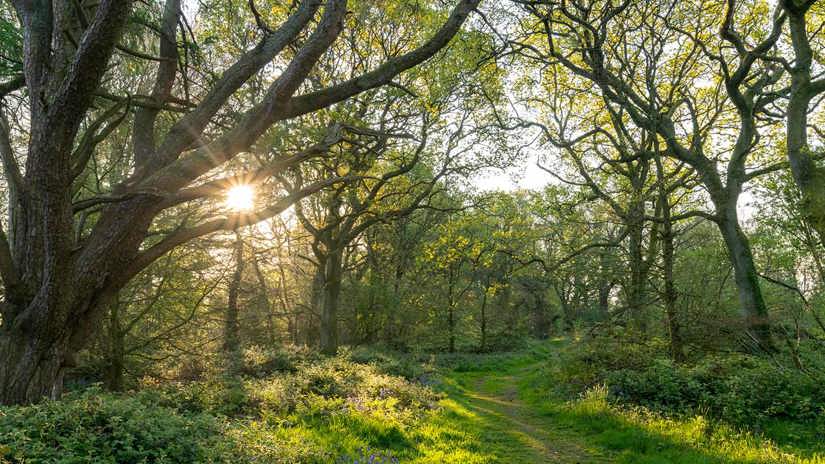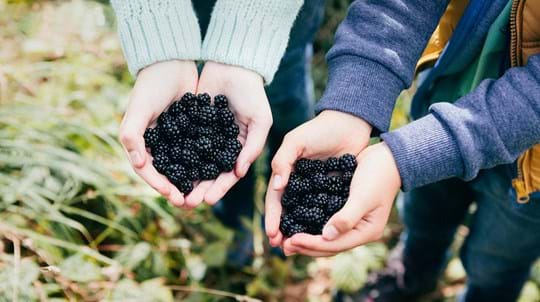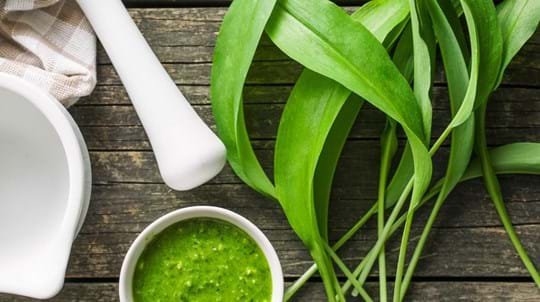Winter berries: what are they and where to find them

Content manager
Winter berries bring a splash of colour to stark and frosty scenes when a lot of trees are otherwise bare. They are a vital food source for wildlife during our coldest months and can be foraged to make some delicious seasonal treats too. Here are our tips on when and where to find them.
What is a berry?
The botanical definition of a berry is a fruit produced from the ovary of a single flower, fleshy throughout except for the seeds. But this can get confusing, as it includes:
- fruits we commonly call berries, like gooseberries and elderberries
- similar-looking fruits like blackcurrants and redcurrants
- fruits we would never think of as berries, including bananas and pumpkins.
To complicate matters more, some fruits that we call berries - like blackberries and raspberries - are technically not berries at all!
So unless you’re a botanist, it’s probably easier to stick with the common definition of a berry: a small fleshy fruit found on plants.
When do winter berries appear?
Different berries grow in different seasons – they’re not all around in winter. Elderberries, for example, ripen in late summer and are devoured by birds and mammals soon after.
All berries you can see in winter have grown in the autumn. Some will last longer than others, making it as far as February in some cases. It all depends on the species and how popular the berries are with the wildlife that depends on them for survival.
Amazingly, studies have shown that birds choose the order they eat berries in carefully, to make sure they have food available for as much of the winter as possible.
First, they eat the non-toxic berries with short shelf lives, like blackberries. Those with longer retention periods, or with a mild toxicity, like ivy, are left untouched until other food sources are scarce. Even then berries with mild toxicity levels can only be consumed in low numbers in any one sitting. This makes sure there’s a supply of berries long into the winter.
Where can we find winter berries?
Here’s a quick guide to some of the berries you’re most likely to see in winter, and how useful they can be to people and wildlife.
Holly (Ilex aquifolium)
Appearance: small clusters of bright red berries.
Where: gardens, parks, scrub, hedgerows and woods, especially oak and beech woods.
When: November to February.
Value to wildlife: the berries are a vital source of food for birds in winter. The mistle thrush is known for vigorously guarding the berries to stop other birds eating them! Small mammals like wood mice and dormice also enjoy them.
How to use at home: holly berries are poisonous to people and pets, so stick to using them for festive decorations.
Spindle (Euonymus europaea)
Appearance: exotic-looking vivid pink fruits with bright orange seeds which resemble popcorn.
Where: found most commonly on wood edges and in hedges and scrub. Less common in Scotland.
When: September to November.
Value to wildlife: birds, mice and foxes eat the berries of the spindle.
How to use at home: it’s probably best just to admire the spindle’s beauty - both the leaves and fruit are toxic to humans. Spindle fruits were once baked and powdered, and used to treat head lice, or mange in cattle.
Hawthorn (Crataegus monogyna)
Appearance: deep red fruits known as haws.
Where: hedgerows, woodland and scrub.
When: September to November.
Value to wildlife: fantastic for wildlife, hawthorn supports more than 300 species of insect. The haws are rich in antioxidants and eaten by migrating birds such as redwings and fieldfares, as well as blackbirds. Waxwings also like haws if any are left in December and January.
How to use at home: haws can be eaten raw but may cause mild stomach upset. They are most commonly used to make jellies, wines and ketchups.
Blackthorn (Prunus spinose)
Appearance: blue-black fruits called sloes measure about 1cm across.
Where: scrub, copses, woodland and hedges.
When: September to December.
Value to wildlife: insects and larger birds like the thrush feast on sloes.
How to use at home: sloes are used for wine making and preserves, and most commonly, flavouring gin.
Rowan (Sorbus aucuparia)
Appearance: small orange-red berries grow together in large clusters.
Where: commonly found in the wild, particularly in the highlands of Scotland. Also widely planted as street and garden trees.
When: August to January.
Value to wildlife: caterpillars of the apple fruit moth feed on rowan berries, as do birds including mistle thrush, redstart, redwing, song thrush, blackcap, fieldfare and waxwing.
How to use at home: berries are sour but safe to eat and rich in vitamin C. They make a great jelly to accompany meats.
Juniper (Juniperus communis)
Appearance: fleshy, purple, aromatic, berry-like cones.
Where: thrives on chalk downland, moorland, in rocky areas and old native pine woodland. Most often found as a low-growing, spreading shrub or small tree.
When: year-round.
Value to wildlife: lots of birds eat the berries, including the fieldfare, song thrush, mistle thrush and ring ouzel.
How to use at home: popular for flavouring gin and in liqueurs and sauces. The berries also produce oil that can be used to aid respiratory and digestive problems.
Dog rose (Rosa canina)
Appearance: striking orange-red oval shaped hips (15-20 mm) form in small clusters.
Where: hedgerows, woodland edges and on scrubland. Most common in the south of the UK.
When: September to December.
Value to wildlife: the fruits are a food source for birds such as blackbirds, redwings and waxwings.
How to use at home: rose hips are high in vitamin C and were traditionally used to make syrups to boost levels.
What can you spot in your local wood?

Go exploring
Primordial landscapes, tangled branches, breathtaking wildlife and miles of woodland trails. From the countryside to cities, we care for thousands of woods throughout the UK, all free to visit.
Find a wood near youHungry for more?

Visiting woods
Foraging: what to look out for each month
See what's in season with our guide to sustainable foraging with top tips on how to pick, cook and eat wild plants.

Visiting woods
Responsible foraging guidelines
Gather wild food without harming woods or wildlife. Follow our guidelines.

Visiting woods
Foraging recipes
Our favourite foraging recipes using wild harvested plants from the British countryside.

